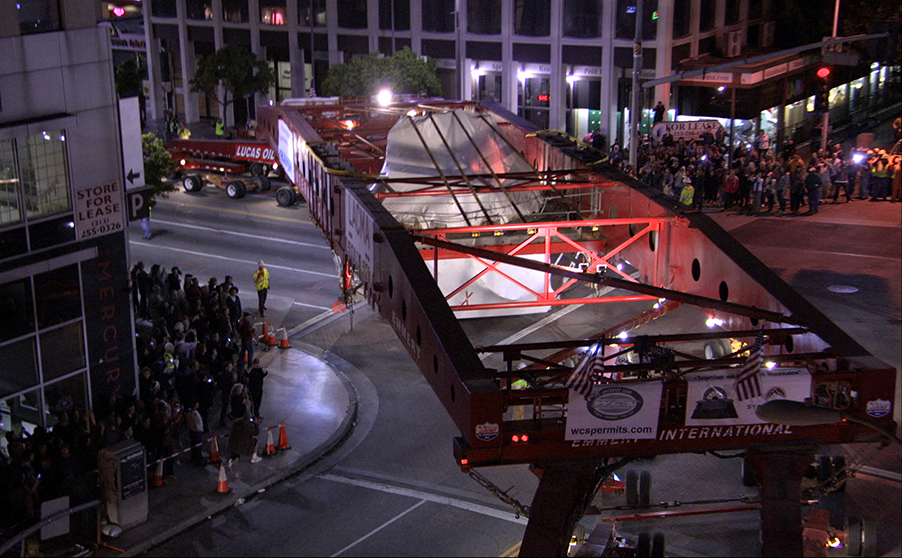
While L.A. jokes may be as common as lawyer jokes, the city is purely American in a way that no other city really is. Our indelible monument to late 20th Century optimism and expansion. The sprawling metropolis by the sea is ever evolving, building new roads for each generation of American to stake their claim.
It has often been said there is no “there” there, but maybe there are too many theres to recognize. Too many different ways to be a city to ever be accurately described. All of the “theres” in L.A. separated by highways and canyons, obstacles of nature and commerce, add up to more than just one place. There are a thousand different versions of Los Angeles, with just as many stories to tell.
There are a million stories in the city of dreams, and Filmworks this month presents one of them. “Levitated Mass” tells a story of the vibrant and ever-surprising Los Angeles art scene. At the center of this story is one of the great museums in the world and an exhibit that brought together a city that isn’t exactly known for unity.
The Los Angeles County Museum of Art serves as a center to the broad Southern California art community. A sprawling complex with an international reputation, LACMA acts as an art history museum, experimental gallery, and public gathering ground. If the L.A. art scene has a town square, it’s LACMA. In 2012, one of its exhibits brought together the city in way that an art installation rarely inspires.
The idea was from Michael Heizer, a renowned but often-misunderstood artist known for large-scale earth sculptures. Heizer’s vision: to suspend a 340-ton boulder above a walking path at the museum. As with most things, the devil was in the details, and that’s where the story of the film begins.
Heizer may be a genius and this may be a great idea, but how do you make it happen? Over 10 days, the granite star of this film inches its way through Southern California to LACMA. Along the way, the entire city of Los Angeles got in on the act, transforming the region into one of the biggest public forums on art and community. Filmmaker Doug Pray captures the spectacle.
A more commonly told Los Angeles story is of Hollywood and the people trying to break into the business. The struggling actor, the rising ingénue, the superstar. These are all characters we are familiar with, but there is another actor’s story to tell: the working actor.
“That Guy . . . Who Was In That Thing” tells the story of the successful — but not famous — actor. What is it like to be able to support yourself comfortably as an actor, but never find the breakout role leading to stardom? Who are all the people who show up to kill someone on “Law & Order” or be treated by House? “That Guy” talks to a group of working actors at various levels of fame about what it means to be successful, the merits of anonymity, and why they keep doing this after so many years.
This documentary provides a highly entertaining look at the very unglamorous work that goes into having a glamorous career in a glamorous city.
“The Garden,” which Filmworks screened at the 2009 Fresno Film Festival, tells the story of an entirely different kind of L.A. dream. This isn’t a dream of changing the art world or of breaking into to show business. This is a dream about a plot of land in the middle of one of the largest cities in the world.
After the 1992 Los Angeles riots, a 14-acre plot of land owned by the city in South Central was cultivated by local residents into the largest community garden in the nation. After more than a decade as a working farm, the city of Los Angeles sold the plot back to the original developer in an unorthodox closed-door meeting. The developer served tenants of the garden with an eviction notice, prompting the residents to organize and hire their own lawyer.
The resulting battle became a labyrinth of land use interpretations, California politics, community organizing, and celebrity activism. “The Garden” watches as a fight over whose American Dream gets to shape our cities opens up wounds and spills secrets on all sides.
Fae Giffen studies at San Jose State in the School of Library and Information Science graduate program. She serves on the Filmworks board, working on marketing and development.
